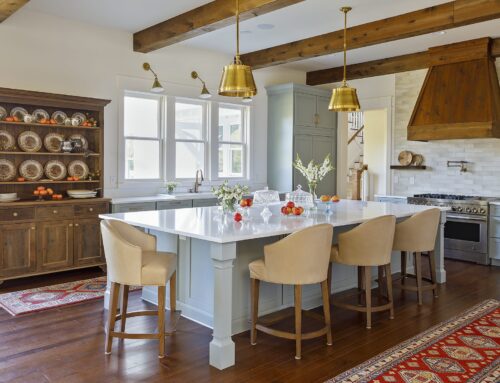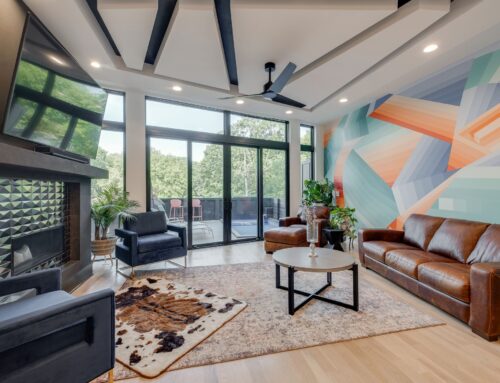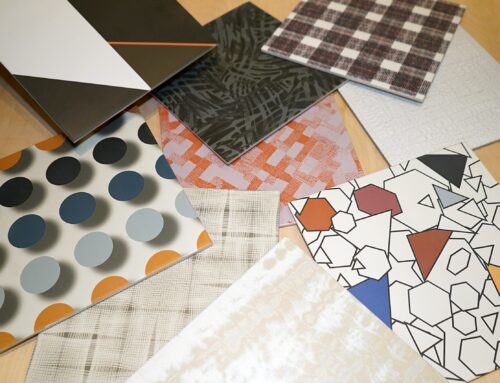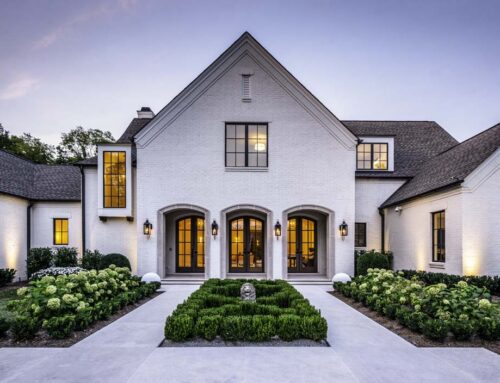The US Department of Energy partnering with the National Fenestration Rating Council have developed the NFRC label. It summarizes all of the main points that are important in deciding which windows will work for your home and your climate. These ratings apply to the whole window, not just the component parts. NFRC labels gauge energy performance and provide a way to compare different windows.
Windows, almost more than any other single component of your home’s structure, affect its occupants well-being. Artificial light pales in comparison to a flood of natural light and the quantity and quality of that flood is determined by your choice of windows. Unfortunately, while windows let in rich streams of light, they also let heat in during the summer months and let heat out during the winter. And remember, not all light is created equal, at least where your furnishings are concerned. Limiting the harmful effects of UV light is an important function of a good window.
So, what does the ideal window do? It lets in light, but not glare, it blocks as much UV light as possible, it is as insulating as possible, and it resists condensation – all while being beautiful in design and functional as ventilation. In this section, we analyze everything you need to know to choose windows for Nashville, because the climate you live in determines the unique demands that will be placed on your windows.
U-Value
The U-Value measures how well a window keeps heat from escaping. The colder the climate, the more important this factor becomes in selecting windows. NFRC labels assess the combined insulating performances of the glass, the sash, the frame and the edge spacers. Ratings for the U-Value are usually between .2 and 1.2. The lower the number the better.
What factors combine to create a window with a better U rating?
1. The material used for the sash and frame act as a thermal bridge for heat. Heat always flows from the warmer object to the cooler which is why you gain heat in the summer and lose heat in the winter. Different materials conduct heat at different rates resulting in windows of varying degrees of insulation.
• Aluminum frames are the worst. If they have a thermal break, they are better, but they still aren’t as good as other choices.
• Wood or wood clad frames, solid vinyl frames and composite frames are about equal.
• Insulated Vinyl frames and Fiberglass frames have the best U-Values.
2. You can increase the insulating quality of your windows 10-15% by selecting ones with low-E coated glass that uses an inert gas filler between the panes. This gas is usually argon or krypton and in addition to increasing the window’s R-value, it also keeps the inside surface of the window warmer, making the window more resistant to condensation. Studies have shown that only one half of one percent of the gas will leak per year so after 20 years, the gas is still 90% as effective as when it was installed.
3. Warm-Edge Spacers made from plastic or synthetic rubber can increase the temperature at the edge of the window by 6-8°.
Solar Heat Gain Coefficient
The Solar Heat Gain Coefficient gives a numerical value between 0 and 1 that represents how much solar radiation the window admits as heat, not light. Since Nashville has a very warm climate, windows that block as much solar heat as possible while not blocking too much visible light are the best choice. Look for a number as close to 0 as possible. These windows will admit the least amount of heat.
How do Low-E windows affect Solar Heat Gain?
Low-E, or low-emissivity, coatings improve the insulating characteristics of windows by reflecting radiant heat. This coating is a microscopic metallic coating applied to the glass. It can also be applied to a clear polyester film called a Heat Mirror that is positioned between the panes of glass. This technique will increase the R-Value of the window to as high as R-5 with one layer and R-8 with two layers. During summer when the heat comes from outside, low-E windows reflect heat back outside and in the winter when it is warmer indoors, low-E windows reflect the heat back indoors.
Low-E windows come in different strengths. High solar gain windows let in more heat than low solar gain. Since our summers are hot and our winters are mild, in Nashville the better choice is low solar gain windows. A new generation of low-E windows that performs wonderfully in warmer climates is Spectrally Selective Low-E. This type of window outperforms other windows for combining high R-values, high visible light transmittance, and low solar heat gain. You also want to consider orientation when choosing the amount of solar gain you want. For example, with north facing windows you may choose a higher solar gain window and for western facing windows spend more money on a lower solar gain window.
Condensation Resistance
Warm air can hold more water than cold air. In the winter, when your warm interior air comes in contact with a cold window the air cools and looses its ability to hold as much water resulting in condensation on your windows. Other than being aggravating, what’s so bad about a little condensation? Well, condensation can compromise window frames and if it is bad enough it can leak into walls staining woodwork and damaging walls. If it is cold enough it can even freeze leaving you with a sheet of ice inside your windows.
The best way to reduce condensation is to choose a low-E window with gas fill between the panes, warm edge spacers and avoid metal frames. Choose wood, vinyl, fiberglass or a composite. The NFRC label will have a number between 1 and 100 that indicates how well the window resists condensation. The higher the rating, the better.
Air Leakage
Not only do drafty windows increase occupant discomfort, they also increase heating and cooling bills. While leakage rates are expressed in terms of cubic feet per minute (cfm) per square foot of glass area, the leakage occurs in the structure of the frame itself. On the NFRC label, look for the lowest number possible in the Air Leakage box. These will be the tightest windows.
Components that contribute to tighter windows are good weather-stripping systems made from durable materials like silicone and EPDM. Also, windows with compression seals are generally tighter than windows with sliding seals.
Visible Transmittance
The reason you want windows in the first place is to take advantage of the natural light and views to the outside. Low-E coatings and glazings reduce the amount of visible light that a window will admit. So in selecting the right window for you it’s really about balance between quantity of light and quality of insulation. On the NFRC label, the visible transmittance score averages the entire window, not just the glass. Expressed as a number between 0 and 1, the closer the number is to 1, the more light the window will let in. Usually a well insulated window with Low-E glass will have a Visible Transmittance of about .7.






Leave A Comment
You must be logged in to post a comment.